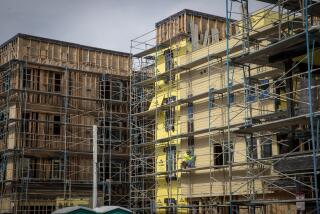Floating staircases vs. the law
- Share via
OH, THOSE heavenly floating stairs. They seem to levitate on their own, with no railing to mar the effect.
Modernists since Le Corbusier have dreamed of unobstructed staircases, cantilevered into space. Join enough home tours these days, and you’ll see at least one.
But, dear minimalists, here’s the reality: Those stairs may be cool, but they may not be legal.
A wall or a guardrail must be on both sides of a staircase to meet code, says Bob Steinbach, spokesman for the Los Angeles Department of Building and Safety.
“You cannot have an open stairway,” he says. “Homeowners who are told otherwise by contractors are not being told the truth.”
The rules are similar in most cities. The Los Angeles code for single-family residences states that any platforms (including stairs) rising more than 30 inches need a handrail on at least one side. Handrails need to be 34 to 38 inches above the steps.
Where there is no wall, a guardrail at least 3 feet high is required to prevent falls. Openings between the guardrail posts cannot be more than 4 inches.
A common strategy to flout the rules: Install a guardrail before inspection, then remove it afterward. Homeowners and designers who do comply with code often use steel cables, which provide a safety element with minimal visual distraction. Glass and acrylic panels can serve as transparent guardrails.
-- Janet Eastman
More to Read
Sign up for The Wild
We’ll help you find the best places to hike, bike and run, as well as the perfect silent spots for meditation and yoga.
You may occasionally receive promotional content from the Los Angeles Times.






